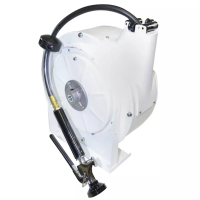Lit. No. 41298, Rev. 01 February 15, 2019
55
TROUBLESHOOTING
INTRODUCTION
All malfunctions of the HT Series™ snowplow
can be categorized as structural, electrical, or
hydraulic. Structural issues are generally related
to the blade, A-frame, headgear, or mount
components, and are usually identifi ed by visual
inspection. However, electrical and hydraulic
issues can be diffi cult to trace.
Read and understand the Theory of Operation
before attempting troubleshooting.
Because of the relative complexity of the snowplow
electrical and hydraulic systems, some conditions
must be eliminated in order to develop valid tests.
If the listed conditions are not met, the procedure
can result in inaccurate results and wasted time.
In many cases, satisfying the listed conditions
alone solves the problem.
1. Go to the Before You Begin section (next
page), and satisfy the listed conditions. These
conditions must be met before proceeding to
any of the tables and tests that follow.
2. If a lighting problem exists, proceed to the
proper Headlamp Troubleshooting tables for
a list of basic test questions and solutions to
common problems.
3. If still having problems or the problem is not
related to the headlamps, go to the Hydraulic
System Testing section.
4. Follow along sequentially through the tables
and tests, referring to the Hydraulic & Electrical
Schematics and System Overview sections
as needed. Eventually the problem can be
identifi ed at the component level.
ELECTRICAL TESTING
Read and understand the electrical circuit
operation information in the Theory of Operation
section. A simple 12-volt (12V) test light with a
ground lead or volt meter can be used for circuit
testing in most cases. The exception is the paired
multiplex wiring, which carries a low level signal
from the control to the Plow Module.
When directed to check for 12V, ground the test
lamp lead or volt meter and probe the terminal.
When asked to check for ground, attach the test
lamp lead to +12V and probe the terminal.
NOTE: 12V is a nominal value. If using a
voltmeter, actual voltage will vary with the
vehicle and presence of loads in tested
circuits. Continuity alone does not guarantee
a good circuit. Poor connectors or damaged
wires may have continuity but be unable to
carry suffi cient current.
HOW TO USE THE TROUBLESHOOTING
GUIDE

